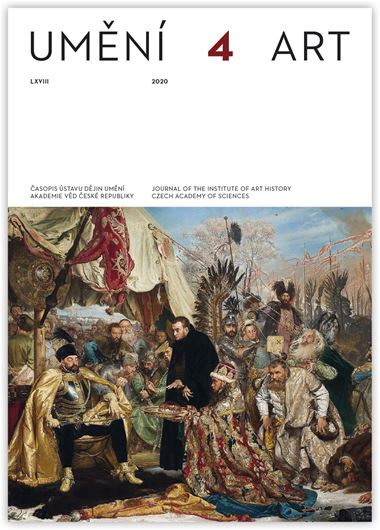Aleš Mudra
Towards the Gates of Paradise and Jerusalem: Meanings of the Relief on the Portal of the Monastery Church in Plasy
The relief tympanum in the recently uncovered portal of the basilica of the Cistercian abbey in Plasy in western Bohemia is an important addition to the stock of twelfth century sculpture. This study examines its iconography and its visual sources in the context of the typology of Byzantine and Italian artefacts of the seventh to the twelfth centuries extending into the imperial symbolism of ancient Rome. The motif of the cross with two trees was widespread in the sculpture of the regions on the road north from Rome to Lombardy, to which Czechs travelled in 1158–1162 in the service of Emperor Friedrich Barbarossa and from where they carried off various treasures. Relationships between the ruler of Bohemia Vladislav II and the Byzantine emperor Manuel Komnenos enabled the transmission of models from the east, and the association of the motif with staurotheques. The related triumphal and paradise symbolism of the cross was used in the context of the campaign preceding the Third Crusade. An active role was taken in this by the son of the funder of the Plasy monastery, and its patron and builder, Duke Bedřich. The meanings of motifs of the pillar, star, flower and polygram are conceived as an adaptation and actualisation of classical models (and transcultural ‘natural’ symbolism) with the help of biblical metaphors and Christian exegesis, followed in artistic traditions of the early Middle Ages. Attention is also paid to the perception and the decoding of the meanings in an environment with an undeveloped visual culture, with lingering references to paganism, and limited by the regulations of the Cistercian Order. The symbolism of the relief signals to visitors that this is the threshold of a sacred sphere, but also mediates their involvement in the performative connections of the portal and church and an appeal to participation in rituals. The topical references to the ethos of the ongoing Crusades are connected with timeless religious meanings, including the fundamental paradox of Christian art (the portrayal of the unportrayable). The cross without the Crucified and the pillar-Christ avoid the problem of the (non) identifiability of the image and its prototype. More easily than figural images, abstract forms reorient attention to the meaning’s essence — the invisible and unportrayable divinity.
Full-text in the Digital Library of the Czech Academy of Sciences:
https://kramerius.lib.cas.cz/uuid/uuid:13d539d1-cfb4-4c39-901f-c67c86621f6d
< back

